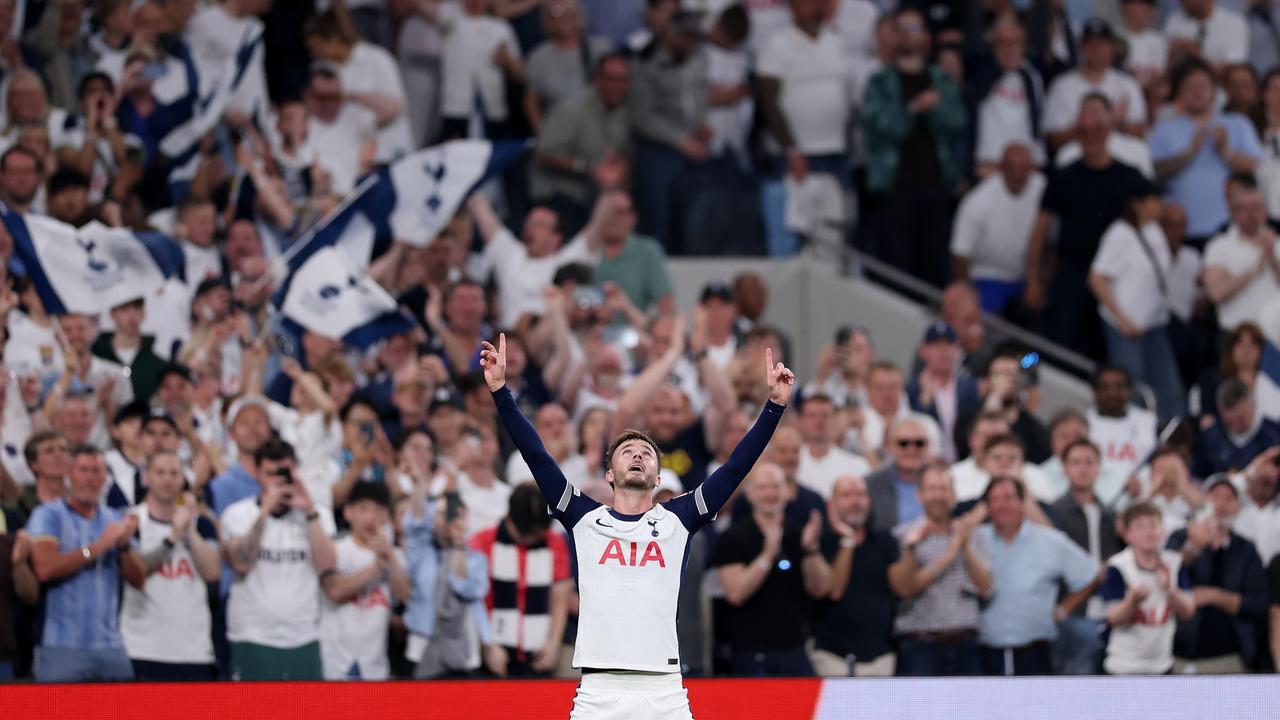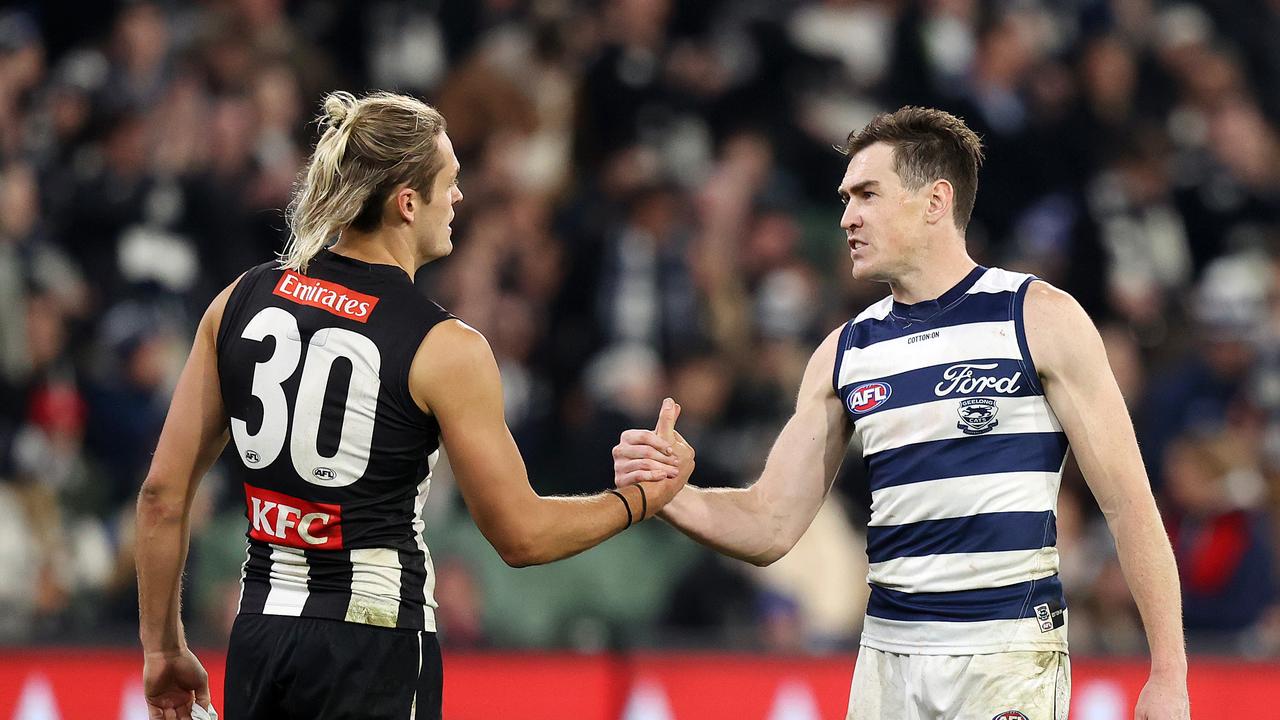How the best AFL teams are winning games through the art of winning clearances
Every possession in football is important, but some are more important than others.Most of the focus goes to the last possession — the one that ends in a goal, behind, turnover or stoppage. But often it's the first — or first clear possession — from stoppage that can separate the good from the bad across the league.AFL teams throw tremendous resources around how to transition the ball from the inside to the outside and up the field effectively.Last week the Western Bulldogs delivered a lesson on how important this is. The Dogs pounded GWS into submission through scoring from stoppages.The Dogs won 22 more clearances than GWS, despite both teams winning about the same number of first possessions.The Dogs have been the most damaging team from stoppage this year, winning plenty of the ball and scoring at will.So what's really important to teams in the stoppage, and what can be hidden by the noise around the ball?Manuka nightsIn the aftermath, GWS coach Adam Kingsley was quick to identify the biggest gap between the two sides."In its simplest form … stoppage tonight was quite disappointing. They're an outstanding stoppage team, with a lot of really great stoppage players. We failed to cope with that at all, which was incredibly disappointing," Kingsley said.Digging a bit deeper beyond raw numbers can tell us why. While much of football commentary is focused on who has the ball, the importance of the other 35 players often gets ignored.Where those other players stand, how they move and how they interact with each other can separate great teams from merely good."They were able to win that ball and then use their shape — which they are fantastic at — and we failed to compete with them on the inside," Kingsley said."They have really great balance around the stoppage or the contest to maximise their time and space they created.""Using shape" is a phrase often used in footy circles but often skimmed over in explanations to the broader audience.Ryley Sanders has been a big improver in the Bulldogs's midfield this season. (Getty: Mark Metcalfe/AFL Photos)In this sense, Kingsley refers to the placement of the Dogs midfielders in the clutches of the contest. Rather than having multiple players chasing themselves out of position to try to win the ball, the Dogs showed patience to hold spots as second or third receivers from the scrum.James Ives knows the ins and outs of stoppages better than most. The Queensland-based football analyst was a mainstay in the VFL and NEAFL for almost a decade, and captained Queensland at under-18 level. During his time playing and observing footy, Ives understood what worked in the middle and what was superfluous.Loading..."If your team doesn't win the ball immediately, you've got to hold shape. Holding shape to maintain balance around the contest is critical," Ives said."Not every stoppage ends with clear possession, so that if the ball is loose, you can win the ball or neutralise the spill. If they do get the ball, you can start to apply pressure to make the exit hard.""It's really important to manipulate the body position of an opponent. For example, owning their back, driving them under the contest or even turning them 360 (degrees) so they lose sight of the contest."This further increases the odds that you'd win or at least neutralise the contest, as well as feeding into the next layer which is the secondary contest, post-clearance. If you maintain a healthy shape and dominant body position, your odds of winning the race to the post clearance contest increases."The opposite to holding shape is "collapsing in". That is exactly what it sounds like — getting sucked in by the loose ball rolling on the ground or in opposition hands. Holding shape can take time to practice and a lot of patience to master.There's also little to no data collected or available about the importance of shape. It's hard to collect information about the lack of interaction with the ball, or the player with it.Instead, it's something that needs to be seen in action to be believed.Winning the ballWinning the ball first is one thing, but turning first possessions into something meaningful is something else altogether."Ideally, your team's first possession should try and engage contact to release your teammates or you should burst away into space. Those players and teams who do neither struggle to impact scoring." Ives said.Loading YouTube contentThat decision, and the ability to create doubt in opposition players, is critical to making the most of winning the ball. Some players like to change up between modes, while others try to make the most of just one tool.Some players, such as Clayton Oliver and Tom Green, absorb a lot of early contact and use their large frames to fight through opposition bodies to get clean handballs out. Other players, such as Chad Warner and Max Holmes, like to use their foot speed to burst away from opposition to create space for their teammates.Different teams tend to have different preferences when it comes to how they exit as well. The two most successful teams from clearance — the Dogs and Suns — have different approaches when looking to draw opposition sides in. The Dogs like to use the ball early, with the Suns often try to burst through that first wave.Both approaches have been successful so far this year.More important than picking one tool or another is being in sync with what your teammates are doing — especially those newer to the midfield mix.Learning on the jobMost AFL players entering the system do so as superstars of the junior game who often have the game revolve around them, winning the ball at will. The jump to learn a more defensive or team oriented part of the game can take some young players years to master.Bulldogs coach Luke Beveridge said the importance of teaching his young players the value of being balanced post-game."Yeah it's ultra-important. You know the kids who come in go on this really steep learning adventure."Most players coming into the league start in auxiliary positions as they get the pace and feel for the game at the top level.Joel Freijah has been another find for the Dogs in the middle. (Getty Images: Darrian Traynor)"From junior to senior football there's two themes that stand the test of time — an increase in speed and an increase in force," Ives said."This means that the tricks or weapons that work at one level suddenly don't work at the next."The journey for them to learn the importance of space, structure and balance can take time."So Ryley Sanders last year, his first experience at playing senior footy. (He was a) high possession winner in his age group … highly talented, very capable. He's learned some things and now the balance in his game is getting better and better — and I'm talking about a second-year player there." Beveridge adds.The Bulldogs, through the necessity of early season injuries, have been forced to insert youth into the contest. With the all-conquering Marcus Bontempelli and talismanic Adam Treloar missing time early, young players such as Sanders, Joel Freijah and Rhylee West have increasingly been inserted to critical roles in the middle.It's been a trial by fire, but a successful one, as the stars of the junior ranks have learned to play a more measured role at the top level.How to adjustSo if the Dogs were dominating the contests so much, why didn't GWS adjust?Well, that's easier said than done most of the time."So you have different plans around 'OK, they are getting on top.' You know we can try and square them up, we can send more numbers in, we can take more numbers out to try and change the look of it. But the reality was they were dominant and we didn't hold up." Kingsley said.From the outside it often looks like teams and coaches set their methods early, but the little tweaks to instruction can often be hard to observe. Sometimes — like last week in Canberra — that's because they don't work.But the important thing to remember is that it's not just when you are struggling that you need to think about adjusting, but also when you are doing well.The Bulldogs have also significantly improved their clearance game as the season has progressed. Their coach puts it down to that ability to create uncertainty in the opposition."I think you're always making alterations on the run. You know the thing about stoppage work and the uncertainty in there is you got to turn it into certainty for yourself," Beveridge said."The art of good stoppage play is being good at being proactive. So you've got to keep changing it up because the opposition see what you do."The emphasis on variety — in both personnel and movement — alongside the importance of patience might just be the critical component to effectively winning the hardest of hard ball in the AFL in 2025.












